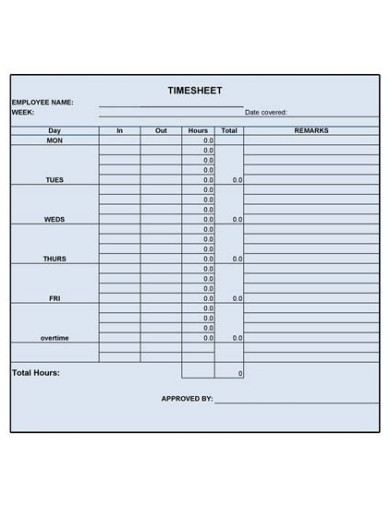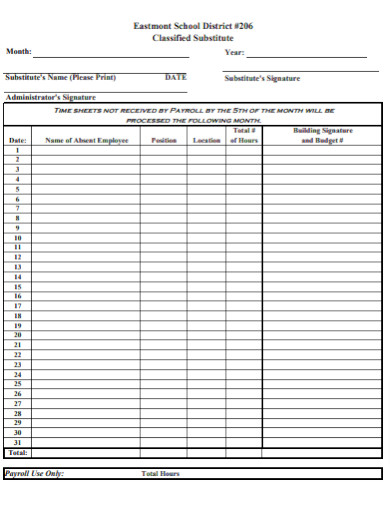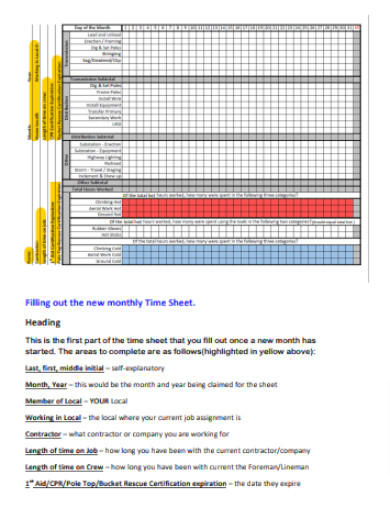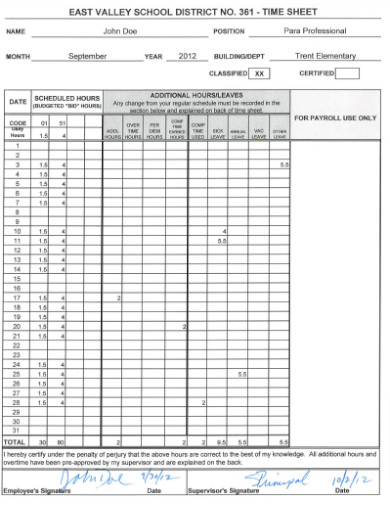25+ SAMPLE Monthly Construction Timesheet
-

Monthly Construction Time Sheet
download now -

Simple Monthly Construction Time Sheet
download now -

General Monthly Construction Time Sheet
download now -

Weekly Construction Monthly Timesheet
download now -

Sample Monthly Construction Timesheet
download now -

Monthly Construction Employee Timesheet
download now -

Monthly Construction Miscellaneous Timesheet
download now -

Monthly Construction Work Timesheet
download now -

Monthly Construction Substitute Timesheet
download now -

Semi-Monthly Construction Timesheet
download now -

Monthly Construction Payroll Timesheet
download now -

Monthly New Construction Timesheet
download now -

Monthly Construction Leave Timesheet
download now -

Monthly Construction School Timesheet
download now -

Monthly Construction Report Timesheet
download now -

Monthly Home Construction Timesheet
download now -

Monthly Construction Timesheet Outline
download now -

Monthly Construction Overtime Timesheet
download now -

Basic Monthly Construction Timesheet
download now -

Bi-Monthly Construction Timesheet
download now -

Monthly Construction Timesheet Layout
download now -

Blank Monthly Construction Timesheet
download now -

Editable Monthly Construction Timesheet
download now -

Monthly Construction Payroll Schedule Timesheet
download now -

Monthly Construction Employee Training Timesheet
download now -

Monthly Construction Timesheet Navigation
download now
FREE Monthly Construction Timesheet s to Download
25+ SAMPLE Monthly Construction Timesheet
Definition:
Understanding the Importance of a Monthly Construction Timesheet:
The Underlying Mechanics:
Benefits that Transcend Mere Tracking:
Crafting the Perfect Timesheet:
Challenges:
Overcoming Them:
Looking Ahead: The Future of Timesheets in Construction
Monthly Reflections and Adjustments:
Why is it essential to regularly review and approve monthly timesheets?
How can a monthly timesheet benefit long-term construction projects?
What’s the role of monthly timesheets in dispute resolution and audits?
What are best practices for storing and archiving monthly timesheets?
When can workers anticipate compensation based on their monthly timesheet?
Definition:
A Monthly Construction Timesheet is a systematic record documenting the hours worked by employees within a month on a construction project. This tool assists in accurate payroll processing, facilitates project management by monitoring labor productivity, and provides insights into work allocation. By consolidating hourly data, it ensures transparency and helps in optimizing resource utilization in construction endeavors.
Understanding the Importance of a Monthly Construction Timesheet:
Construction projects thrive on precision. Delays can lead to cost overruns, making the effective management of time crucial. Enter the Monthly Construction Timesheet, a pivotal tool that aids in monitoring the project’s lifeline: its workforce.
The Underlying Mechanics:
Behind every successful construction project is an army of workers diligently logging their hours. These timesheets:
Core Principles:
Understanding the foundation of any process or system is crucial. Whether it’s the engineering behind a building or the algorithm powering a software, knowing the core principles offers clarity and direction.
The Driving Forces:
Behind every mechanism, there’s a force or a set of forces propelling it. Recognizing these can help in harnessing their power or counteracting their effects.
Components and Their Interactions:
Every system is made up of multiple components. Understanding how these parts interact, support, or sometimes hinder each other is vital for optimization and troubleshooting.
Balancing Act:
Most systems strive for equilibrium. Understanding the factors that bring about this balance and those that disturb it can guide interventions and adjustments.
Input-Output Analysis:
Breaking down the inputs a system receives and the outputs it produces can offer insights into its efficiency, waste production, and areas for improvement.
Friction Points:
Every mechanism has areas of resistance or friction, which can slow down processes or reduce efficiency. Identifying and addressing these can drastically improve performance.
Evolution Over Time:
Mechanisms are seldom static. Recognizing how they’ve evolved over time can offer clues about future trajectories and potential areas of innovation.
The Human Element:
Even in the most automated systems, the human element plays a role, be it in design, operation, or oversight. Accounting for human behavior, unpredictabilities, and needs can lead to more holistic and effective solutions.
Benefits that Transcend Mere Tracking:
A Monthly Construction Timesheet isn’t just a record; it’s an analytical tool:
Data-Driven Decisions:
Harnessing real-time data from tracking tools empowers companies to make informed and strategic decisions, reducing guesswork and elevating project outcomes.
Efficient Resource Allocation:
Beyond just knowing where resources are allocated, tracking ensures they are directed towards high-impact tasks, reducing waste and enhancing productivity.
Predictive Insights:
With continuous monitoring and analytics, companies can identify patterns, enabling them to anticipate future challenges and opportunities.
Building Accountability:
A transparent tracking system fosters a culture where team members take ownership of their tasks, bolstering responsibility and dedication.
Cost Efficiency:
By pinpointing inefficiencies, redundancies, and leaks through precise tracking, companies can substantially reduce unnecessary expenses.
Time Optimization:
In construction, time equates to money. Effective tracking ensures timely completion of tasks, preventing costly delays and overruns.
Seamless Communication:
Real-time tracking data ensures everyone is informed, streamlining communication among stakeholders and minimizing misunderstandings.
Boosted Client Confidence:
Transparency in operations and progress reassures clients, strengthening their trust in the construction firm’s capabilities.
Crafting the Perfect Timesheet:
It’s not just about logging hours; it’s about doing it effectively:
Understanding the Purpose:
Before creating a timesheet, it’s crucial to pinpoint its primary purpose. Is it for payroll, productivity monitoring, project management, or another purpose?
Define Time Intervals:
Decide on the granularity of time tracking, whether hourly, daily, weekly, or another interval. This will often depend on the nature of the work and the payment structure.
Clearly Label Tasks/Projects:
Each task or project should be distinctly labeled to avoid confusion. Using codes or unique identifiers can streamline this process.
Incorporate Flexibility:
Flexibility is key in construction, where tasks can change rapidly. The timesheet should allow for easy adjustments and updates.
Include Essential Employee Details:
Every timesheet should have space for the employee’s name, ID, role, and other pertinent information.
Digital Integration:
In today’s digital age, consider integrating the timesheet with software or apps that can auto-populate certain fields, track time automatically, and more.
Verification Process:
Include a verification step, where both the employee and supervisor can confirm the accuracy of the timesheet.
Training and Guidance:
Provide training sessions or guidelines on how to fill out the timesheet correctly. This will minimize errors and inconsistencies.
Challenges:
While the benefits are numerous, there are challenges to be addressed:
Navigating Manual Entry Errors:
Despite best efforts, manual timesheet entries can lead to inaccuracies. These errors can stem from forgetfulness, misunderstanding, or even intentional discrepancies.
Resistance to Change:
Introducing new timesheet systems or procedures can be met with resistance from employees accustomed to previous methods. This resistance can hinder the adoption of more efficient systems.
Time Consumption:
While timesheets aim to streamline processes, entering data can be time-consuming, especially if not integrated with other systems or if they’re overly complex.
Lack of Real-time Data:
Traditional timesheets don’t offer real-time insights. This can delay decision-making processes, especially when quick adjustments to resource allocation are needed.
Difficulty in Tracking Multiple Tasks:
In construction, workers might switch between tasks frequently. Capturing every shift can be challenging, leading to potential inaccuracies.
Data Storage and Retrieval:
Storing timesheets, especially paper ones, requires space. Digital timesheets can pose challenges in terms of data storage, backups, and retrieval.
Overcoming Them:
To overcome these challenges, it’s crucial to:
Adopt a User-friendly System:
Choose a timesheet system that is intuitive and easy to use. A straightforward interface can minimize errors and reduce the time taken to input data.
Provide Comprehensive Training:
Offer training sessions for all employees, ensuring they understand how to use the timesheet system correctly and the importance of accurate entries.
Set Clear Guidelines:
Establish and communicate clear guidelines on how tasks should be labeled, how breaks should be recorded, and how any other specific entries should be made.
Integrate with Other Systems:
Ensure the timesheet system integrates seamlessly with other management software or digital tools used within the company. This helps in streamlining processes and reducing discrepancies.
Leverage Automation:
Where possible, automate repetitive or standard entries to minimize manual errors. For example, automatically logging standard work hours and only requiring manual entry for overtime.
Stay Updated with Legal Requirements:
Regularly review labor laws and ensure that the timesheet system and processes comply, especially concerning overtime, breaks, and minimum wage.
Looking Ahead: The Future of Timesheets in Construction
With advancements in technology, Monthly Construction Timesheets are poised to become even more integral. Features like real-time tracking, geofencing, and integration with wearables might soon become standard, making the process more streamlined and efficient.
Digital Transformation:
The construction industry is witnessing a surge in digital solutions, and timesheets are no exception. The future will see more cloud-based platforms, allowing workers to input their hours from any device, anywhere. This flexibility will enable real-time updates, reducing discrepancies and delays.
Integration with Wearables:
Wearable technology like smart helmets and wristbands will play a more significant role in tracking workers’ hours. These devices can automatically log start and end times, breaks, and even monitor workers’ health and safety on site.
Advanced Analytics:
Modern timesheet systems will provide more than just time tracking; they’ll offer insights into workforce productivity, labor costs, and project efficiency. Advanced analytics will help managers make data-driven decisions and optimize resources.
AI and Machine Learning:
Artificial intelligence (AI) and machine learning can be used to predict trends, analyze patterns, and even flag potential timesheet fraud. Over time, these systems will ‘learn’ from the data, continually improving accuracy and reliability.
Voice-activated Entries:
With the rise of voice assistants like Alexa and Google Assistant, it’s conceivable that future timesheet systems will enable workers to log their hours using voice commands, making the process more seamless and user-friendly.
Biometric Verification:
To ensure authenticity and reduce fraud, biometric systems like fingerprint or facial recognition might be incorporated. This ensures that the person logging the hours is indeed the worker assigned to the task.
Monthly Reflections and Adjustments:
Reviewing timesheets monthly provides an opportunity to:
Reflecting on Achievements and Hurdles:
Monthly reflections provide an opportunity to look back on what was accomplished and identify areas of improvement. This process helps in celebrating successes, acknowledging hard work, and addressing any challenges faced during the month.
Analyzing Performance Metrics:
By reviewing monthly performance indicators, teams can gauge if they are on track to meet their objectives. These metrics can range from financial targets to project completion percentages or even employee satisfaction scores. Anomalies in the metrics can point towards areas needing adjustments.
Financial Review:
For any project or organization, financial health is paramount. Monthly checks on budget vs. actual expenditure, cash flows, and projected financial needs can inform necessary adjustments, ensuring projects remain financially viable.
Resource Optimization:
A monthly review can highlight resource allocation issues. Perhaps some teams are under-resourced while others have bandwidth. These insights enable reallocation to ensure balanced workloads and optimized productivity.
Risk Assessment:
As projects progress, new risks can emerge, or old ones can evolve. Monthly reflections provide a regular cadence to reassess these risks, ensuring timely interventions and strategy updates.
Personal Growth and Development:
On an individual level, monthly reflections can guide personal development. Team members can identify skills they wish to hone, areas of improvement, or even chart out their career trajectory based on monthly feedback.
Why is it essential to regularly review and approve monthly timesheets?
Regularly reviewing and approving monthly timesheets ensures accurate compensation, fosters accountability, and aids in project management. It identifies discrepancies early, facilitates budget tracking, and aids in forecasting resource needs. This routine also boosts employee morale, knowing efforts are monitored and rewarded timely, and reinforces the importance of accurate time tracking within the team.
How can a monthly timesheet benefit long-term construction projects?
A monthly timesheet aids long-term construction projects by providing structured time tracking, improving budget management, and forecasting labor needs. It helps in evaluating productivity trends, monitoring project progression in alignment with timelines, and ensuring resource allocation efficiency. Moreover, it facilitates financial planning, aiding in timely payments, and mitigates discrepancies, enhancing overall project transparency and accountability.
What’s the role of monthly timesheets in dispute resolution and audits?
Monthly timesheets play a pivotal role in dispute resolution and audits by serving as documented evidence of work performed, hours logged, and payments made. They provide transparency, validate billing, and confirm resource allocation. In case of discrepancies or audits, these timesheets act as verifiable records, fostering trust, ensuring compliance, and minimizing potential conflicts or financial discrepancies.
What are best practices for storing and archiving monthly timesheets?
Best practices for storing and archiving monthly timesheets include: digitizing records for easy retrieval and backup; using secure, cloud-based systems for remote access and protection against data loss; categorizing timesheets by month, year, and project; regularly backing up data; and maintaining strict access controls to protect sensitive employee information and prevent unauthorized modifications.
When can workers anticipate compensation based on their monthly timesheet?
Workers can anticipate compensation based on their monthly timesheet typically at the end of the month, depending on the company’s payroll schedule. The exact timing is determined by the employer’s payment cycle, contractual agreements, and local labor laws. It’s essential for companies to communicate and adhere to a consistent payment schedule.
In conclusion, the monthly construction timesheet proves indispensable in optimizing construction operations. By meticulously tracking time and resources, it enhances transparency, ensures accurate invoicing, and promotes efficient project management. As an integral component of modern construction workflows, leveraging such tools can significantly elevate productivity, ensuring that each project phase aligns with its budgetary and temporal benchmarks.
